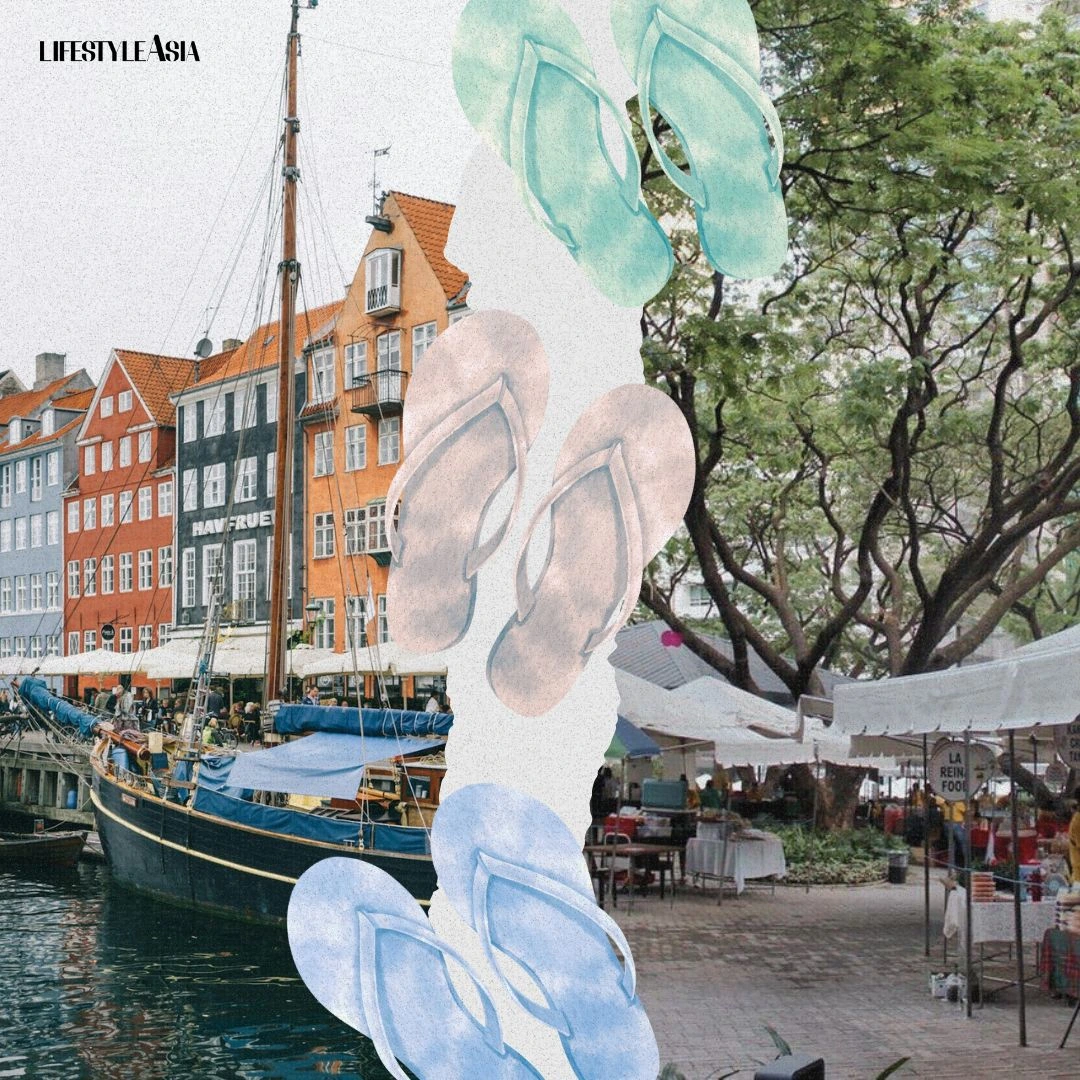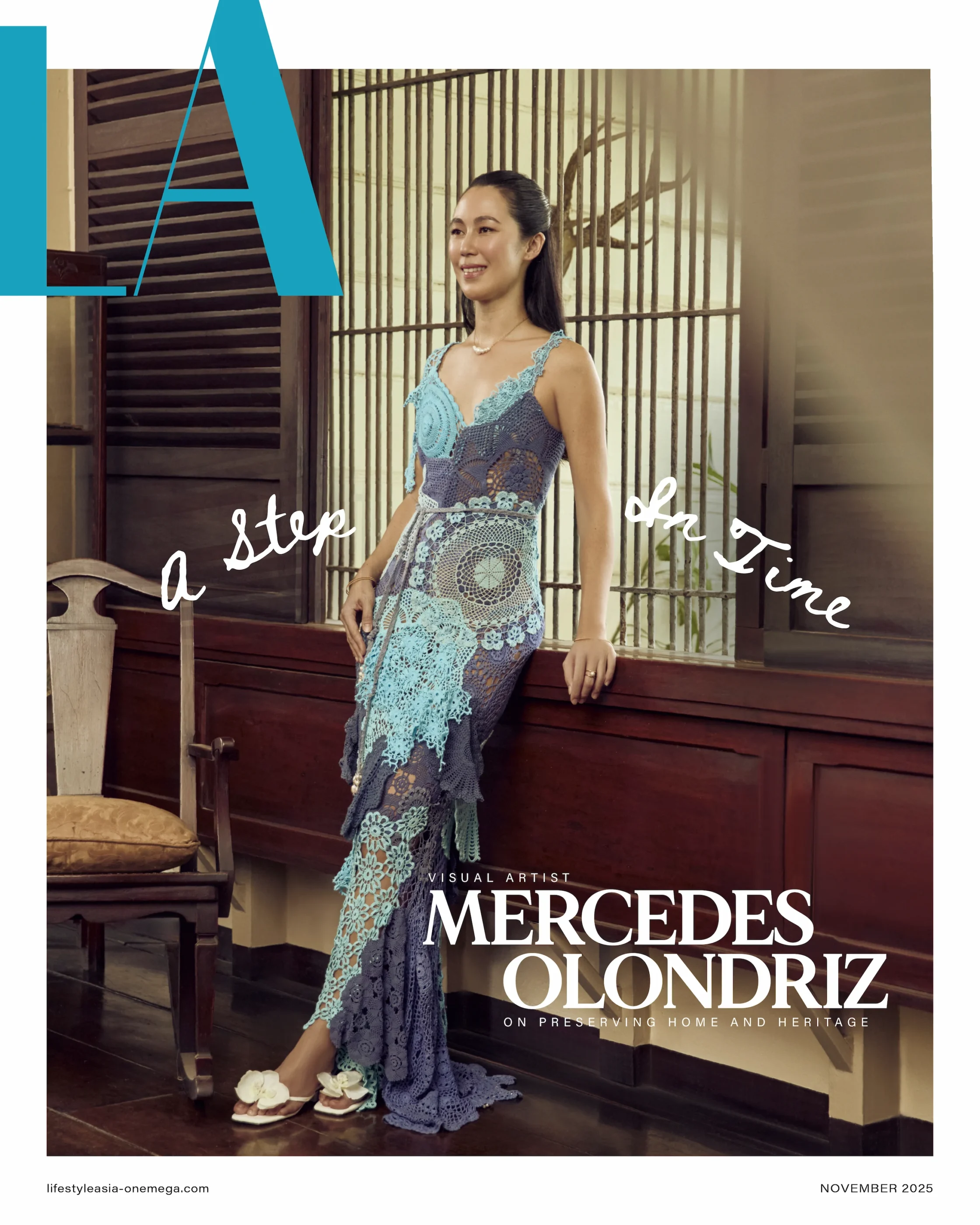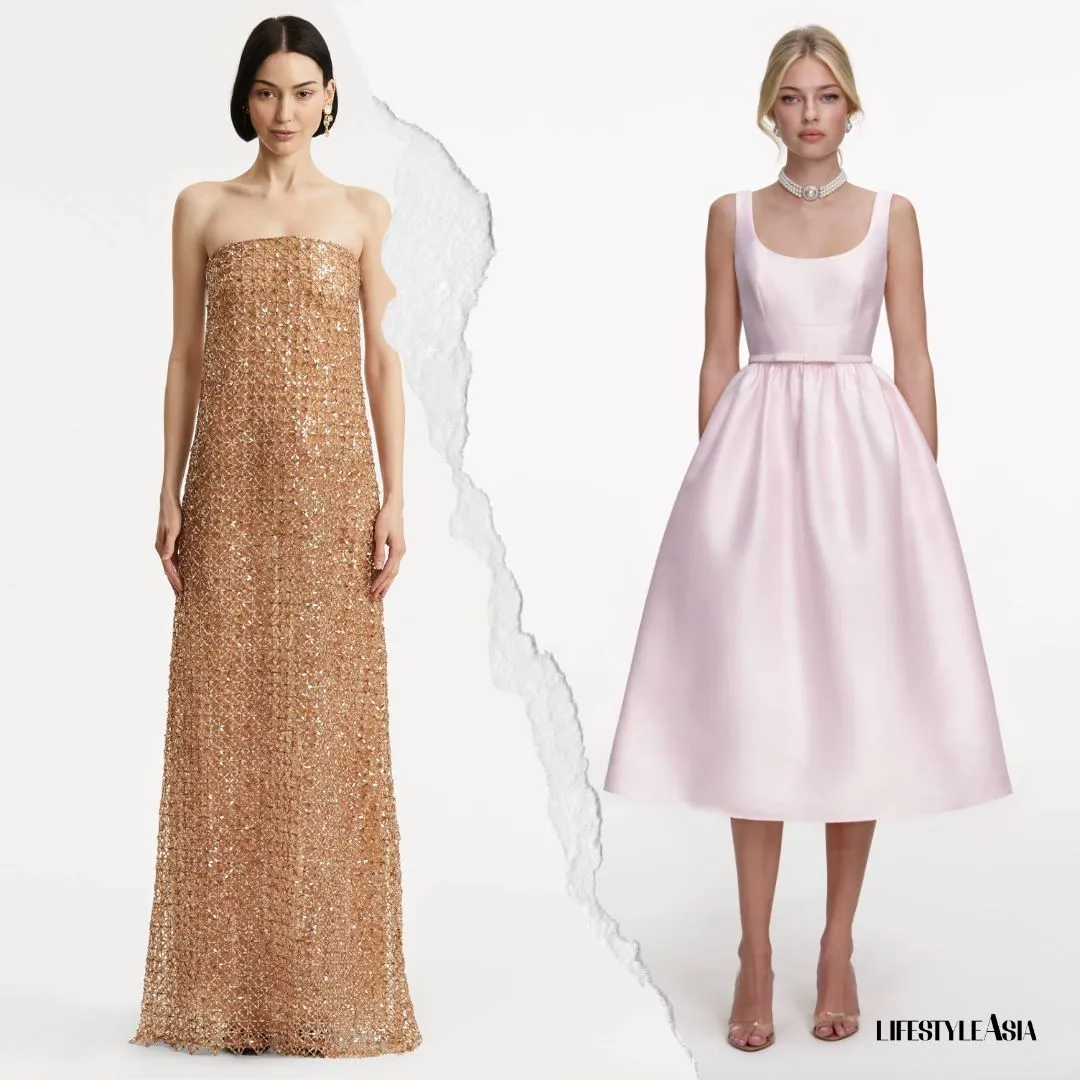Flip-flops are everywhere in the Philippines—but why does it take Copenhagen to make them “fashionable”?
If you live in Metro Manila and are in your 20s or 30s, you’ve probably received an invite for a morning walk and brunch in Salcedo, Makati. Arguably one of the poshest neighborhoods in the city, Salcedo transforms into a weekend market every Saturday, where you’ll find unique and delicious food, charming knick-knacks, and a variety of blooms. As you weave through the crowd, you’ll likely spot a distinct fashion trend—flip-flops paired with chic outfits—a quintessential style marker of the internet-famous “Salcedo Girl.”
At the heart of this trend is the Salcedo Girl herself. She’s the one at the Saturday market with a tote full of greens, flowers, and maybe even a cheeky bottle of natural wine. Effortless yet intentional, her flip-flops aren’t sloppy—they’re a statement: I could’ve worn designer, but I chose comfort—and made it chic.
If you’re on TikTok, you’ve surely seen her making the rounds—buying flowers, cafe hopping, and reading books at the park. The curated image and the lifestyle attached to it are unique—or so we thought.
Recently, a video (sorry, I’m chronically online) of a girl in Makati went viral for wearing flip-flops “in a Copenhagen way,” sparking discourse about Eurocentrism and neo-colonialism. Which brings us here: a closer look at the ethos behind the chic flip-flop.
READ ALSO: Copenhagen S/S26 Fashion Week’s Scandi Chic Runway Moments
Flip-Flops Are A Copenhagen Thing?
When people think of Copenhagen style, the image that often comes to mind is effortless minimalism with a twist: loose tailoring, clean lines, muted palettes, and practical footwear. It’s the kind of fashion that looks like it took five minutes to throw on but somehow still feels editorial. Flip-flops slip seamlessly into this aesthetic because they embody that nonchalant, “I didn’t overthink this” vibe. In a city known for biking everywhere and prioritizing functionality, it makes sense that even the most laid-back sandal could be seen as chic when paired with structured trousers, oversized blazers, or flowy dresses.
Furthermore, this “Copenhagen style” was on full display during the recently concluded Copenhagen S/S 26 Fashion Week. Although it may not be as prominent as Paris, Milan, or New York Fashion Week, Copenhagen offers a distinctive experience through its blend of cultural sensibilities and fashion. Its street style, in particular, is arguably the most underrated—marked by a unique flair that sets it apart.
So when someone in Makati was spotted wearing flip-flops “like a Copenhagener,” the internet pounced. It wasn’t really about the rubber slippers—it was about the styling. The idea of taking a humble, everyday shoe and elevating it with clean, sophisticated outfits mirrors the Danish fashion ethos: comfort first, but make it aspirational. For Filipinos, the humor—and irony—lies in the fact that flip-flops are already a national staple. So why does it take a Copenhagen stamp of approval to suddenly make them feel fashionable?
Eurocentrism And Flip-Flops
Here’s where the discourse gets thorny. Flip-flops have long been ingrained in Filipino culture—worn everywhere from sari-sari store runs to beach trips. They’re practical, accessible, and so tied to our tropical lifestyle that they’re almost invisible. Yet the moment they’re styled in a “Copenhagen way,” suddenly they’re rebranded as chic. This brings up the issue of Eurocentrism: why do trends only seem to gain legitimacy when reframed by Western fashion capitals?
There’s also a layer of irony here. Many of the flip-flops that appear in “Copenhagen chic” videos are Havaianas, a brand of Brazilian origin. What’s celebrated as Scandi minimalism actually originates from Latin American design, then gets filtered through a European lens before being hailed as stylish. Meanwhile, in the Philippines, where slippers are practically a national uniform, the same look can be dismissed as too casual—until global fashion decides otherwise. It’s a classic example of how cultural capital flows unevenly, reinforcing who gets to decide what is considered aspirational.
At the same time, the Salcedo Girl complicates this narrative. By pairing her flip-flops with linen dresses, oversized shirts, or tailored trousers, she reclaims the look on her terms. It’s both a nod to global trends and a reminder that we’ve been wearing flip-flops—without apology—all along. In that sense, she doesn’t just follow Copenhagen chic; she flips it back, showing that style isn’t about where it’s validated, but how it’s worn.
In the end, the flip-flop isn’t just a shoe—it’s a cultural mirror. Whether worn in Salcedo or Copenhagen, it proves that style isn’t about where it’s validated, but how confidently it’s claimed.





